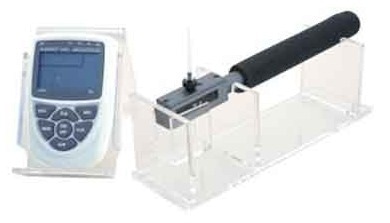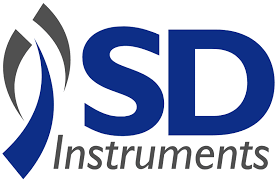Aesthesiometers—or esthesiometers—are used to investigate the tactile sensitivity of different body parts, such as the mouth, eyes, or skin. Different types of aesthesiometers work for different functions, but the overall approach to measuring the level of sensitivity is referred to as ‘aesthesiometry.’
This article looks at some types of aesthesiometers and outlines how they are used.
Von Frey hair aesthesiometer
First developed in 1896, this type of aesthesiometer leverages filaments reliant on the underlying principle that an elastic column will buckle elastically at a special force upon compression, dependent on the material’s diameter, length, and modulus.
The force exerted by the column is constant when it buckles, despite the degree of buckling. This means that it is possible to use these filaments to exert a range of forces to test subjects’ skin in order to determine at which force the subject starts to feel pain.

Image Credit: San Diego Instruments, Inc.
Higher forces are required to buckle shorter columns, meaning that the buckling force increases substantially when a small amount increases the diameter of the filament.
The filaments are typically made from identical-length nylon hairs with varying diameters. The use of different diameters allows for the delivery of forces between 0.008 grams and 300 grams.
This type of aesthesiometer is generally used for research, diagnostics, and animal and human medicine screening. It is used to study hyper-/hyposensitive areas as well as skin areas with standard responsiveness.
Semmes-Weinstein aesthesiometer
This aesthesiometer uses identical-length nylon monofilaments with a range of diameters, leveraging diameter and length to control force. Three-digit numbers are used to reflect the aesthesiometer’s force, with these instruments designed to stimulate small areas. Force is measured rather than area in this instance, because an equal area of skin is indented for both light and heavy forces.
Air-based aesthesiometers
Non-intrusive, air-based aesthesiometers can be used to test the sensitivity of cornea nerves. These aesthesiometers use controlled pulses of air to stimulate the area, allowing the device to collect readouts. Thermal aesthesiometers can also be used to ascertain sensitivity to thermal stimuli.
San Diego Instruments’ aesthesiometers
San Diego Instruments offers an easy-to-use, user-friendly aesthesiometer system designed to allow researchers to investigate sensory and pain thresholds in a single system.
The system features rigid tips suitable for pain threshold measurement and 15 Supertips designed to support investigations into sensory threshold. These tips are attached to the load cell in the pressure probe before being applied to the test subject, with the unit displaying and storing the reading in grams.
This straightforward approach results in a quick and easy test system, removing the need to calculate results manually.
Acknowledgments
Produced from materials originally authored by San Diego Instruments.
About San Diego Instruments, Inc.
For more than 30 years, San Diego Instruments has served the scientific community as a comprehensive resource for the design, manufacture and distribution of behavioral neuroscience research instruments used in human and animal studies. Utilized in laboratories and cited in research papers worldwide, SDI systems have come to represent the industry standard for quality and longevity. Our premier SR-LAB™ is the world’s most widely used startle response system. At SDI, our commitment to developing quality products that stand the test of time is matched only our dedication to excellent customer service. We take pride in our ever-growing core of loyal clientele.
SDI behavioral neuroscience research systems afford you the utmost in quality and performance, giving you the edge in an industry where Power, Flexibility and Ease of Use are everything.
Sponsored Content Policy: News-Medical.net publishes articles and related content that may be derived from sources where we have existing commercial relationships, provided such content adds value to the core editorial ethos of News-Medical.Net which is to educate and inform site visitors interested in medical research, science, medical devices and treatments.